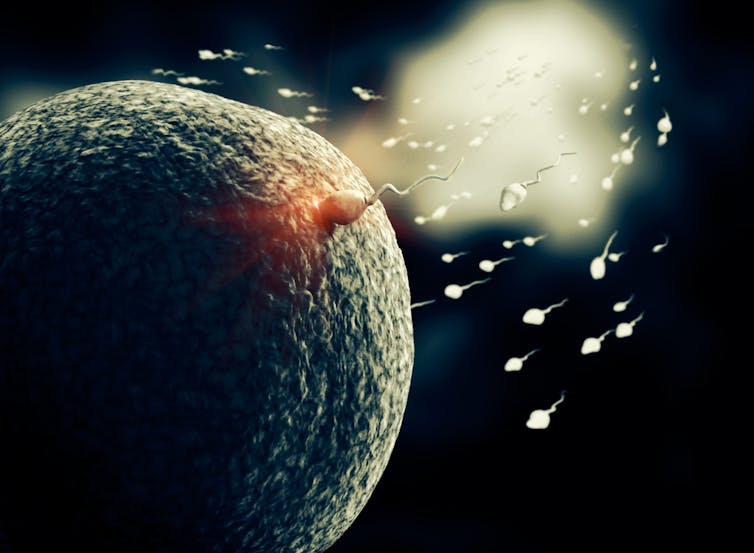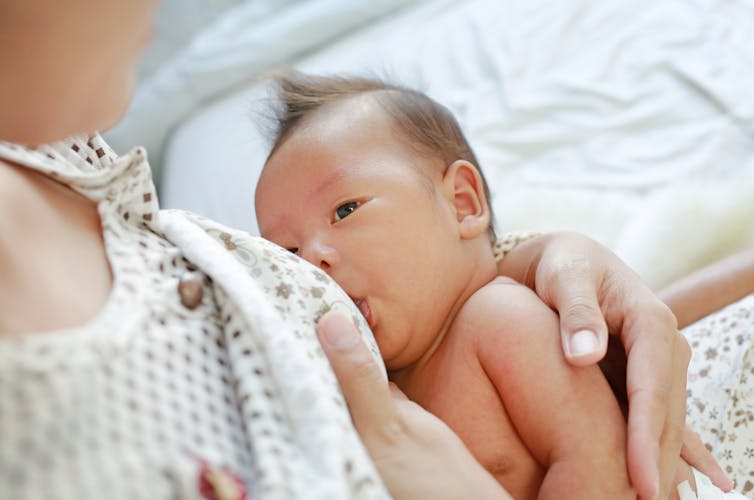Kids' learning and health is shaped by genes they don't inherit, as well as genes they do
- Written by Jenny Graves, Distinguished Professor of Genetics, La Trobe University
It’s a hoary old debate: how much do our genes define how we grow and learn, and how much is due to the environment? A new study by Kong and colleagues shows that parents’ genes, even those not passed on to children, have major effects on kids’ health and educational attainment.
Although this discovery has been reported by some as “headspinning”, to me it is not too surprising.
We already know parents contribute genes that directly influence development, and that the child’s environment determines how these genes have an effect.
But a crucial part of this environment is the parents. To me, this new study highlights the importance of parental genes in shaping how we are raised.
Read more: Not just about sex: throughout our bodies, thousands of genes act differently in men and women
Genes and human development
We know from many studies that most aspects of human growth and development are strongly influenced by the genetic make-up of the child. For instance, comparing identical and non-identical twins shows big genetic components for such physical differences as height and weight, as well as for many behaviours, including learning ability.
But we also know all of these traits are strongly influenced by the environment. For instance, height can be stunted by poor nutrition, and learning ability limited by poverty.
 The development of these triplets will be shaped by their genes and their environment.
from www.shutterstock.com
The development of these triplets will be shaped by their genes and their environment.
from www.shutterstock.com
Hundreds – probably thousands – of our 20,000 genes contribute to these qualities. For each gene, different variants (called “alleles”) may produce differences – large or small – in how children develop.
The way to identify these genes is to compare the genetic make-up of many people and see what alleles correlate – that is, show a statistically relevant match-up – with particular traits. This used to be tough when we were working one gene at a time, using clumsy ways to identify alleles by their DNA sequence or by the proteins they make.
Now that DNA sequencing is cheap, scientists can look at the whole genome of thousands of children, and their parents, and identify sequence differences all over the genome. This technique, called genome-wide association study (GWAS), has identified many human genes involved in normal development and human diseases.
For example, we know from a study of 100,000 people that 74 regions of the genome are associated with “educational attainment” (the number of years spent studying).
Read more: No, epigenetics and environmental responsiveness don’t undermine Darwinian evolution
Gene effects at a distance
A child receives one copy (allele) of each gene via an egg from the mother, and another allele of each gene via a sperm from the father. Because mothers and fathers are likely to have slight sequence differences in most of their genes, it is easy (for a computer, that is) to identify for each gene which allele came from mum and which from dad.
 Each sperm and egg carries one allele (variant) of each gene.
from www.shutterstock.com
Each sperm and egg carries one allele (variant) of each gene.
from www.shutterstock.com
It is also easy to do the opposite: tell which of the mother’s or father’s two alleles was transmitted to the child, and which allele did not make it into that particular contributing egg or sperm.
Most GWAS studies analyse only those parental alleles that were transmitted to the child. The new study deliberately looks at the parental alleles that were not transmitted.
The study traced genes in 21,637 men and women in Iceland, where genome data are available for the whole population. They looked in one or both parents to figure out which alleles of genes were transmitted to each subject, and discover which weren’t.
Then they correlated the non-transmitted parental alleles to aspects of education and health in their children. They found, overall, that non-transmitted alleles added up to major effect on the educational attainment of the child, nearly a third of the direct effect of the children’s own genes. Non-transmitted alleles had the same effect won educational attainment whether they were in mothers or fathers.
It was similar for components of growth and health: height, weight, body mass index, use of glucose and fat metabolism in the body, and even the number of cigarettes smoked. Again, the non-transmitted parental alleles (especially the mother’s) were found to have a major effect, even though they didn’t end up in the children.
The nature of nurture
So why am I not surprised by this new finding?
We have known for a long time that the genetic make-up of the mother may have a strong effect on the development of her offspring. “Maternal effect genes” have been studied for decades in domestic animals, even fish and fruit flies.
In humans and other mammals, such genes influence health and nutritional status of the mother during pregnancy, and the supply and make-up of her milk. This has big effects on the growth and development of the fetus and the infant. So it is not surprising that, in this study, the mothers’ non-transmitted alleles have a greater effect on their children’s health than those from the father.
 Genes that determine the amount and quality of breastmilk influence child development.
from www.shutterstock.com
Genes that determine the amount and quality of breastmilk influence child development.
from www.shutterstock.com
But how would the father’s non-transmitted genes work? And how would parental genes affect the ultimate education attainment of their child?
The transmission of influence must be via the parents’ parenting behaviour, which is itself partly genetically determined. The priorities that parents place on reading, sport, use of alcohol and cigarettes are all shaped by genes, and create a home environment that influences children for better or for worse.
This work emphasises that parents are critical components of their child’s environment. Their contribution to their children’s welfare is not only directly through the alleles they pass on, but also indirectly through their own genetic make-up that influences who they are and how they raise their children.
Kong calls this “genetic nurture”. But I wonder if his work has inadvertently started to identify genes that contribute to “good parenting”?
Authors: Jenny Graves, Distinguished Professor of Genetics, La Trobe University





